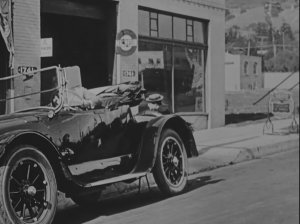Where to find visual Comedy
Jacques Tati
Visual Comedy is something of a lost art nowadays. Most comedy is on just characters talking.
To create a comedic scenario:
- Modes of Find a way to make the character struggle to do something they need to do.
- Interrupt them from getting from point a to point be. Taking advantage of objects and the world around you
Tati’s greatest gags are based off this. The key to make a visual gag is to have it being exaggerated, he only used sound to really sell the gags, rather than the make the gag. Sound can bring life or personality into an object or location.
Little Tich and his Big boots was a funny example of Visual Comedy.
Tati was first trained as a mime artist. He stated If you’re going to exaggerate something, you’ve first got to have something. You want to exaggerate everything you’re doing for the art of humour, often delivered Deadpan.
Tati’s humour is often based on humour or things often overlooked in life, like the way people act in a traffic jam, yawning and picking their nose, not really paying attention to the outside world.
The three key parts of visual comedy are
- Props
- Sound
Angles
You may see something from one angle, but once the angle is changed, it’s not what you thought it was. Set up a situation, cut away for a moment, and then bring it back. A gag needs space and time to forget about the setup so the punchline can hit all the better.
Observation is very important, often the smallest thing can end up being the funniest
– Andrew Saladino
(The royal ocean film society)
Louis CK and the art of Non-Verbal Communication
Comedians mostly talk, and that’s their main way to communicate. Louis CK makes a lot of gags about the lag of an easy communication, not understanding what other people are trying to say.
When Louis CK can’t communicate, the scene is edited to have focus on Louis’ face, and he will convey his emotion with things like his “not-face”
Close up shots of facial features can really communicate a lot of emotion and feeling of the situation. Louis points out that instead of constantly yelling or talking, we should focus on body language.
-Luis Azevedo
The Art of the Gag
Buster Keaton, is a silent comedian, his work is shown through lots of other work, he focuses on al comedy. He told his story strictly through action.
Back in the day, most stories were told through title cards, he focussed on gesture and pantomime. Keaton believed each gesture done should be unique.
“Every single fall is an opportunity for creativity.”
Visual gags work best from one particular angle, and it’s difficult to find the best angle. An angle with a car driving off with a wheel not attached to the car can be viewed from an angle either showing the car, or one showing the wheel and Keaton’s face.
The rules of this world
- World is flat and governed by one law
- If the character can’t see it, the audience can’t see it either.
- The gags are about human movement in the flat world.
The Grand Budapest Hotel used a lot of this skill, Keaton found humour in geometry, showing what is going on through circles, triangles etc.
A lot of the humour is designed to play like magic tricks, and part of the fun is trying to guess how it’s done.
Impossible Gags
Break the rules of the world, and started calling them cartoon gags. For visual comedy, you have to keep your mind open for improvisation. 50% of Buster Keaton was in his mind before the picture, and the rest is through improv.
Buster Keaton said to “Never Fake a Gag” The only way to convince the audience that what was happening is real, was to actually do it.
– Tony Zhou.
(Every Frame a Painting)

